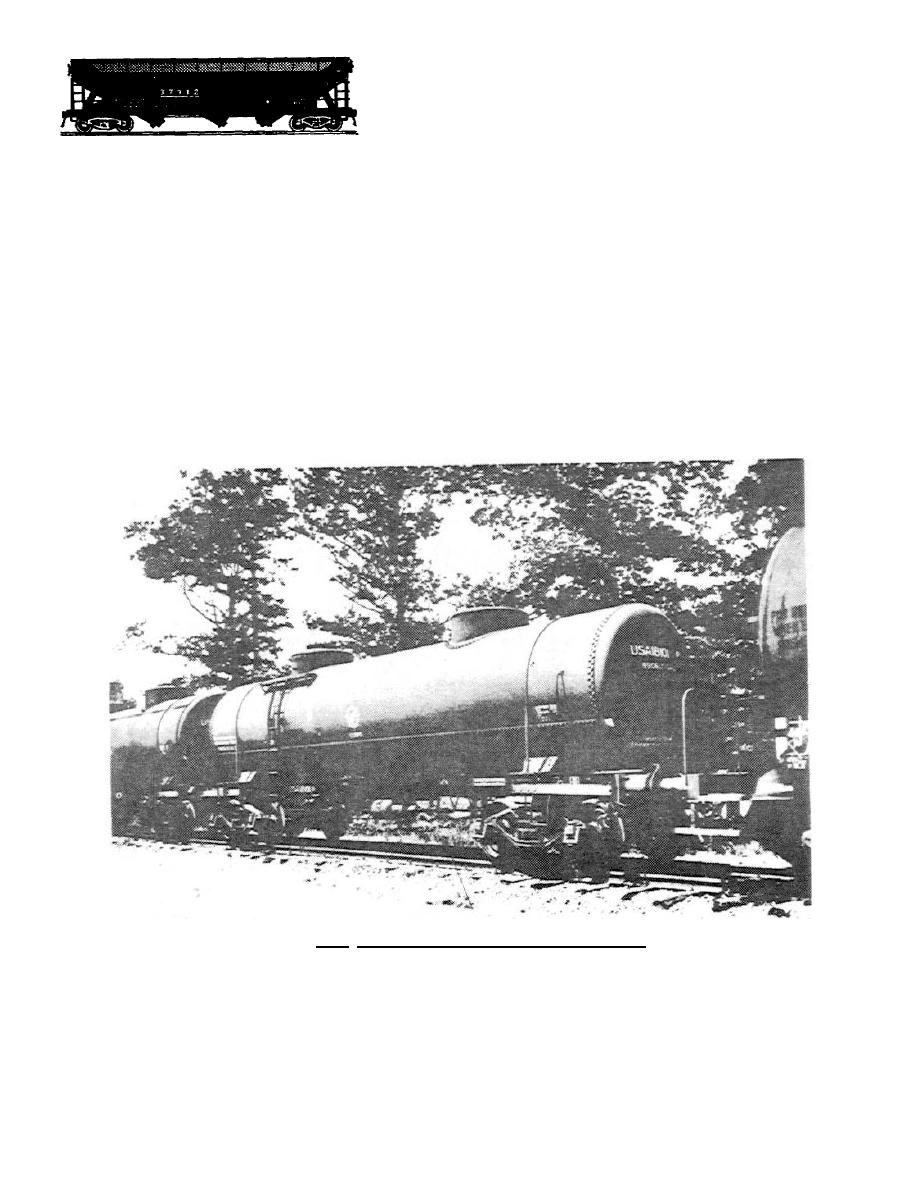
be discharged by gravity. The capacity of these cars ranges from
50 to 80 tons with the number of hopper doors ranging from 2 to 4.
1.6. TANK CAR
Liquids, petroleum products, and compressed gases are transported in tank cars, similar to the one shown
in figure 1.3. The large steel tank is mounted on either a steel underframe or cradles resting on the truck
bolsters. On top of the tank, one or more domes are constructed; the number depends upon the number of
compartments with usually one dome for each compartment. Inside the dome are openings through which the
tank is filled; discharge of the contents is usually through pipes or hoses fitted at the bottom of the tank. Cars
designed to transport semifluids, such as molasses and asphalt, are usually equipped with heating pipes. Tank
cars have capacities ranging from 8 to 20 thousand gallons, with a variation of interior linings designed for the
products they are intended to contain. Plastic, glass, lead, and copper are a few of the materials that line the
interiors. Tank cars usually require a thorough cleaning before they are filled with a different product.
Figure 1.3. Tank Car Designed for Foreign Service.
6


 Previous Page
Previous Page
